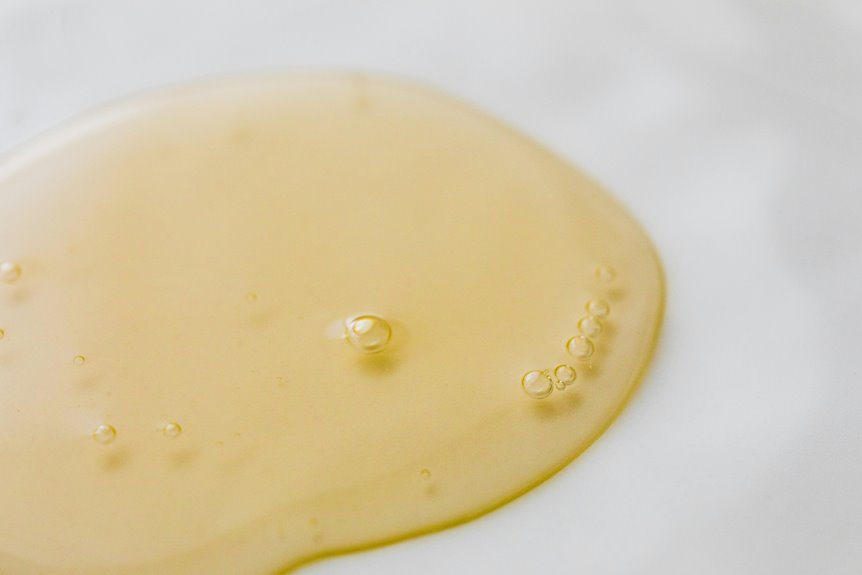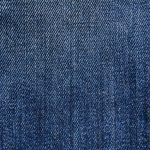Yes, polyamide can shrink if you wash it in hot water or use harsh detergents. To prevent this, always use cold or lukewarm water (30°C to 40°C), choose gentle detergents, and avoid high heat during drying. If your polyamide garment does shrink, soak it in lukewarm water with a gentle conditioner, then carefully stretch it back to shape while damp. Following these tips helps keep your clothes looking great, and there’s more you can do to maintain their durability and fit.
Table of Contents
Key Takeaways
- Polyamide can shrink due to high heat, harsh detergents, and mechanical agitation during washing and drying.
- Wash polyamide garments in cold or lukewarm water (30°C to 40°C) using gentle cycles to prevent shrinkage.
- Avoid bleach and strong chemicals that weaken polyamide fibers and contribute to shrinking.
- To fix shrinkage, soak shrunk garments in lukewarm water with gentle conditioner, then gently stretch and reshape while damp.
- Air-dry polyamide flat away from heat or sunlight, or use low heat in dryers to maintain fabric shape and elasticity.
What Is Polyamide and How Is It Used in Clothing?
Polyamide, commonly known as nylon, is a synthetic fiber widely used in clothing for its strength and elasticity. When you choose polyamide garments, you get durable fabrics that resist wear and tear better than many natural fibers.
You’ll find polyamide in activewear, lingerie, swimwear, and even outerwear because it stretches comfortably and recovers its shape quickly. The fiber’s lightweight nature means your clothes feel soft and smooth against your skin, making them ideal for everyday wear.
Plus, polyamide blends well with other fibers, enhancing moisture-wicking and breathability. When you wear polyamide, you enjoy a balance of comfort, durability, and easy care, which is why it’s such a popular choice in the fashion industry.
Understanding the Properties of Polyamide Fabric
You’ll notice polyamide fibers are known for their impressive strength and flexibility.
This fabric can stretch without losing its shape, making it great for activewear and everyday clothes.
Understanding these properties helps you care for polyamide properly to avoid unwanted changes after washing.
Polyamide Fiber Characteristics
Although it might feel similar to other synthetic fabrics, polyamide stands out with its unique strength, elasticity, and moisture-wicking abilities.
When you wear polyamide, you’ll notice how lightweight and smooth it feels against your skin. This fiber resists abrasion and dries quickly, making it ideal for activewear and outdoor clothing.
Polyamide’s synthetic nature means it’s less prone to mildew and staining, so your garments stay fresher longer. You’ll also find it holds color well, keeping your clothes vibrant wash after wash.
However, polyamide can attract static electricity, so you might want to use fabric softeners or anti-static sprays.
Understanding these characteristics helps you care for polyamide properly and maintain its durability and comfort over time.
Fabric Strength and Stretch
When you choose garments made from polyamide, you benefit from fabric that combines impressive strength with remarkable stretch. This balance means your clothes resist wear and tear while offering comfort and flexibility. Polyamide fibers can stretch without losing shape, making them ideal for activewear or tight-fitting garments. However, excessive heat during washing can weaken fibers, reducing this strength and stretch over time.
| Property | Description | Impact on Garment |
|---|---|---|
| Tensile Strength | High resistance to breaking | Durable for long-term use |
| Elasticity | Stretches up to 40% | Maintains fit and comfort |
| Recovery | Returns to original shape | Prevents sagging or deformation |
| Heat Sensitivity | Moderate | Avoid high temperatures when washing |
Understanding these helps you care for polyamide properly to maintain its performance.
Common Causes of Polyamide Shrinkage
Since polyamide is a synthetic fiber, several factors can cause it to shrink during washing.
One common cause is agitation. If your washing machine uses a rough or heavy cycle, the mechanical action can stress the fibers, leading them to contract.
Another factor is the type of detergent you use; harsh chemicals or bleach can weaken fibers, making them more prone to shrinkage.
Overloading your machine also reduces water flow and prevents proper rinsing, which can trap residues that affect the fabric’s integrity.
Additionally, drying polyamide improperly—like using excessive heat or tumbling for too long—can cause fibers to tighten and shrink.
How Washing Temperature Affects Polyamide
You should know that washing temperature plays a big role in how polyamide behaves in the wash.
Using hot water can cause your polyamide garments to shrink or lose shape, while cold water helps keep them intact.
Let’s explore the ideal water temperature and why cold washes are often the best choice.
Ideal Water Temperature
Although polyamide is known for its durability, washing it at the wrong temperature can cause it to shrink or lose shape.
To keep your polyamide garments in top condition, stick to cold or lukewarm water, ideally between 30°C and 40°C (86°F to 104°F). This temperature range is gentle enough to prevent fiber damage and maintain elasticity, while still cleaning effectively.
Avoid using hotter water, as it can stress the fibers and lead to unwanted shrinkage or distortion. When you wash polyamide properly, you’ll extend the life of your clothes and keep them looking their best.
Always check the care label and choose a gentle cycle to complement the ideal temperature. This simple step helps you protect your polyamide items from washing mishaps.
Effects of Hot Water
When you wash polyamide in hot water, the fibers can contract and cause noticeable shrinkage. Hot water weakens the fibers, making them more prone to tightening. This leads to a smaller, less flexible garment that mightn’t fit well.
You’ll also notice that hot water can:
- Damage the fabric’s elasticity
- Increase the risk of color fading
- Cause the fabric to feel rougher
- Accelerate wear and tear over time
- Trigger wrinkles that are tough to remove
To keep your polyamide items looking their best, avoid hot washes. Instead, opt for lower temperatures to maintain the fabric’s shape and softness.
Hot water might seem like a quick fix for stains, but it often ends up shrinking and damaging your clothes.
Cold Wash Benefits
Since polyamide fibers are sensitive to heat, washing them in cold water helps preserve their shape and strength.
When you use cold water, you reduce the risk of the fabric shrinking or deforming, which often happens with hot water. Cold washes also help maintain the elasticity and durability of polyamide garments, so they last longer and fit better.
Plus, cold water prevents color fading, keeping your clothes vibrant. By choosing cold water, you protect both the fabric’s integrity and its appearance.
It’s a simple step that saves you from potential damage and costly replacements. So, whenever you wash polyamide items, opt for a cold wash cycle to keep them looking and feeling like new.
The Role of Detergents in Polyamide Care
Choosing the right detergent plays an essential role in maintaining your polyamide garments‘ shape and texture. Harsh detergents can damage fibers, causing shrinkage or stiffness.
To keep your polyamide clothes in top condition, opt for gentle, specialized detergents designed for synthetic fabrics. Here’s what you should consider:
- Use mild, liquid detergents to avoid residue buildup
- Avoid bleach or strong chemicals that weaken fibers
- Select detergents labeled safe for synthetic or delicate fabrics
- Use the recommended amount; too much detergent can cause stiffness
- Rinse thoroughly to remove all detergent traces
Drying Methods That Can Prevent Shrinking
Although polyamide is known for its durability, improper drying can cause it to shrink or lose its shape. To prevent this, avoid using high heat settings in your dryer.
Instead, opt for air drying by laying your garment flat on a clean towel, which helps maintain its original form. If hanging to dry, use a padded hanger to prevent stretching.
Never wring out polyamide fabrics, as this can distort fibers and lead to misshaping. If you must use a dryer, select a low heat or delicate cycle and remove the garment while it’s still slightly damp for air drying.
These drying methods will help you keep your polyamide clothes looking great without worrying about unwanted shrinkage.
How to Properly Wash Polyamide Garments
To keep your polyamide garments in great shape, use cold or lukewarm water when washing.
Choose gentle cycles to prevent damage, and pick detergents designed for delicate fabrics.
These steps help maintain the fabric’s integrity and prevent unwanted shrinking.
Optimal Water Temperature
When washing polyamide garments, you’ll want to use cool or lukewarm water to prevent shrinking and damage. Hot water can weaken the fibers, causing the fabric to lose its shape and size.
Here’s how to choose the right temperature:
- Use water between 30°C to 40°C (86°F to 104°F) for best results.
- Avoid temperatures above 40°C, as heat causes shrinkage.
- Cold water works well for lightly soiled items and preserves fabric integrity.
- Lukewarm water helps remove dirt without stressing the fibers.
- Always check the garment’s care label for specific temperature guidelines.
Sticking to these temperature tips guarantees your polyamide clothes stay true to size and last longer.
Gentle Washing Cycles
Since polyamide fibers are delicate, choosing a gentle washing cycle is essential to maintaining their shape and strength.
When you wash polyamide garments, select cycles like “delicate” or “hand wash” on your machine. These settings reduce agitation and spinning speed, preventing fabric stress and potential shrinkage.
Avoid heavy-duty or regular cycles, as they can cause fiber damage or distortion. Also, use a short cycle duration to minimize exposure to water and mechanical action.
If you hand wash, gently swish the item in cool water without wringing or twisting.
After washing, avoid spinning at high speeds; instead, opt for a low-speed spin or skip spinning altogether to protect the fabric’s integrity.
This careful approach keeps your polyamide clothes looking and fitting great.
Suitable Detergent Types
Choosing the right detergent plays a big role in keeping your polyamide garments in good shape.
Polyamide fibers can be sensitive to harsh chemicals, so picking a gentle detergent helps prevent damage and shrinkage. Avoid detergents with strong enzymes or bleach, as they can weaken the fabric. Instead, look for options that clean effectively without compromising the material’s integrity.
Here are some detergent tips for washing polyamide:
- Use mild, liquid detergents designed for delicate fabrics
- Opt for pH-neutral formulas to protect fiber strength
- Skip bleach or optical brighteners which may cause wear
- Choose detergents labeled safe for synthetic fibers
- Consider detergents with added fabric softeners for extra care
Following these guidelines will help maintain your polyamide’s fit and feel wash after wash.
Tips for Restoring Shrunk Polyamide Clothing
Anyone who’s dealt with shrunken polyamide clothing knows how frustrating it can be to see your favorite items no longer fit properly.
To restore them, start by soaking the garment in lukewarm water mixed with a gentle hair conditioner or baby shampoo for about 30 minutes. This softens the fibers, making them more pliable.
Soak your polyamide garment in lukewarm water with gentle conditioner to soften fibers and ease reshaping.
After soaking, gently stretch the fabric back to its original shape while it’s still damp. Avoid wringing or twisting as that can damage the fibers.
Lay the item flat on a towel and roll it up to remove excess water, then reshape and air-dry it flat away from direct heat or sunlight.
Repeating this process a few times can gradually bring back some of the original size and fit.
Comparing Polyamide Shrinkage to Other Fabrics
Restoring shrunken polyamide clothing can be a delicate process, but understanding how polyamide behaves compared to other fabrics helps you manage care more effectively.
Unlike natural fibers, polyamide is less prone to significant shrinkage, yet it still requires caution.
Here’s how polyamide stacks up against common fabrics:
- Cotton often shrinks the most due to its natural fibers absorbing water and heat.
- Wool can felt and shrink dramatically if agitated or exposed to hot water.
- Polyester, like polyamide, resists shrinking but can deform under high heat.
- Linen shrinks moderately and wrinkles easily, needing gentle washing.
- Rayon tends to shrink unpredictably since it’s semi-synthetic and delicate.
Knowing these differences lets you tailor your washing habits to protect your polyamide garments better and avoid surprises.
Expert Recommendations for Long-Lasting Polyamide Care
Although polyamide is durable, you’ll want to treat it with care to keep your garments looking their best.
Always wash polyamide items in cold water using a gentle cycle to prevent shrinkage and maintain fabric integrity. Use mild detergents without bleach or fabric softeners, which can damage fibers.
Avoid high heat when drying; instead, air dry your garments flat or hang them in a shaded area. If you must use a dryer, select a low-heat setting.
To keep polyamide stretchy and smooth, avoid wringing or twisting wet items. Store polyamide clothing away from direct sunlight to prevent fading and fiber breakdown.
Following these expert tips will extend the life of your polyamide garments and keep them fitting comfortably for years.
Frequently Asked Questions
Can Polyamide Fabric Cause Allergic Reactions?
Imagine you wear a polyamide shirt and notice itchy skin—that’s a mild allergic reaction. You might develop irritation because some people react to synthetic fabrics. You should test fabrics carefully to avoid discomfort and rash.
Is Polyamide Fabric Environmentally Friendly?
You should know polyamide isn’t the most eco-friendly fabric since it’s synthetic and derived from petroleum. However, you can choose recycled polyamide to reduce environmental impact and support more sustainable textile production practices.
How Durable Is Polyamide Compared to Other Synthetic Fibers?
You’ll find polyamide quite durable compared to other synthetics; it resists abrasion and stretching well. However, it’s less UV-resistant than polyester, so handle it with care to maintain its strength and longevity over time.
Can Polyamide Be Recycled Effectively?
Recycling polyamide promises potential, but processing presents problems. You can recycle it effectively through specialized programs, yet contamination complicates cycles. To contribute, you should sort and send polyamide items to proper facilities for promising, planet-friendly practices.
Does Polyamide Fabric Retain Odors After Washing?
Polyamide fabric can retain odors after washing, especially if you don’t wash it properly. You should use a good detergent and avoid fabric softeners to keep it fresh and odor-free for longer.
- The Use of Nonwovens in Construction and Civil Engineering - July 11, 2025
- The Use of Nonwovens in Construction and Civil Engineering - July 11, 2025
- The Use of Nonwovens in Construction and Civil Engineering - July 11, 2025







